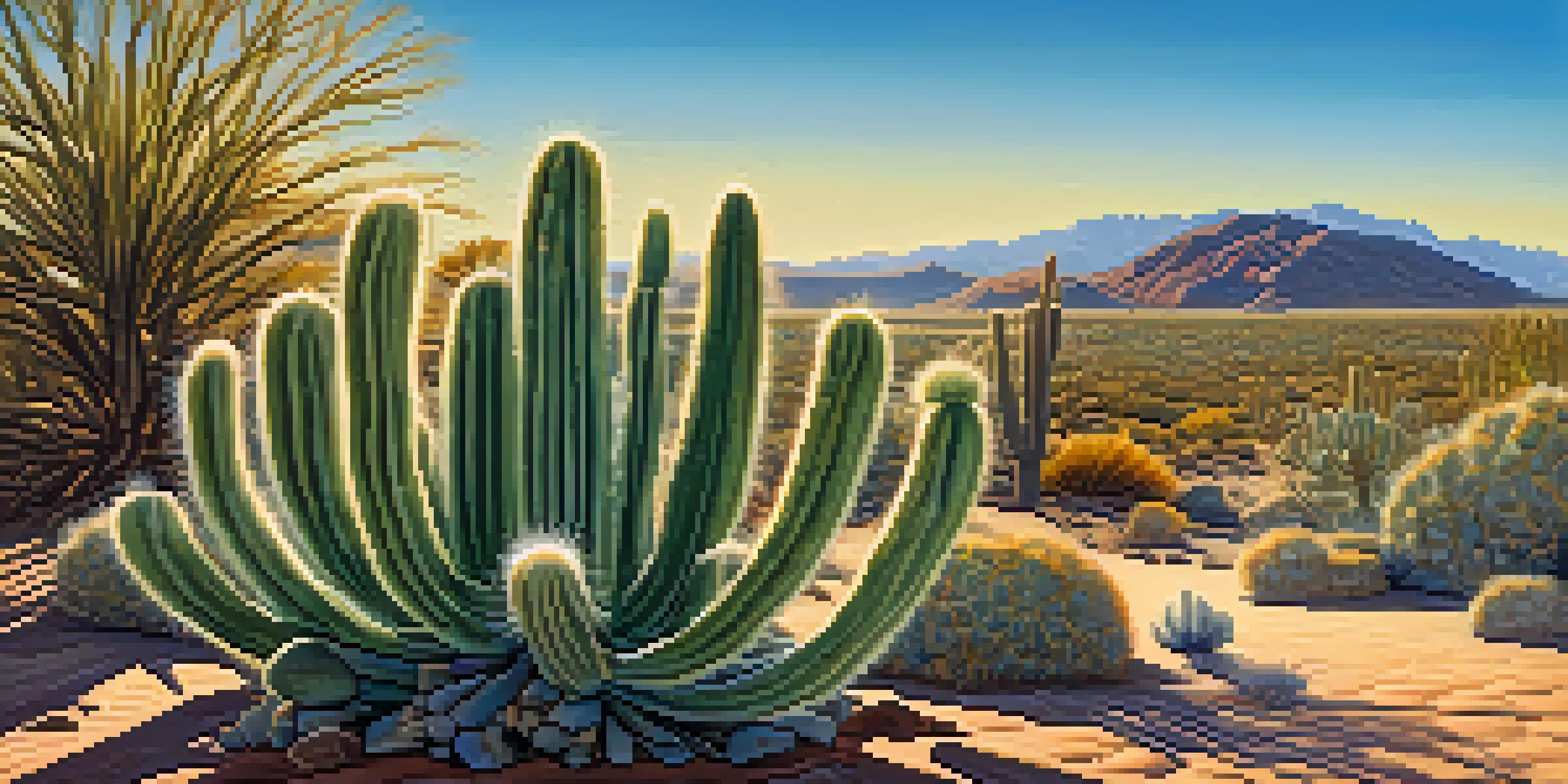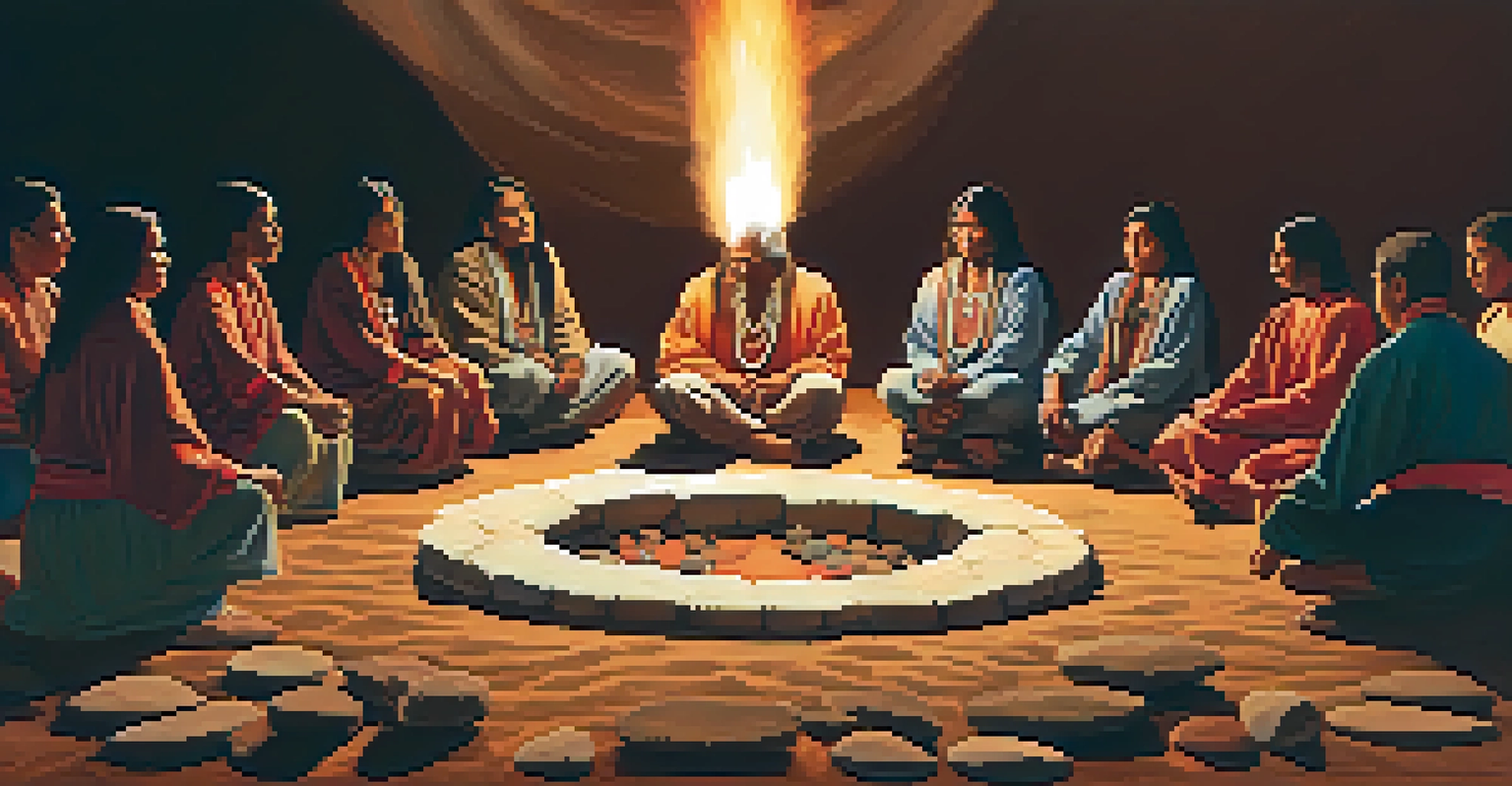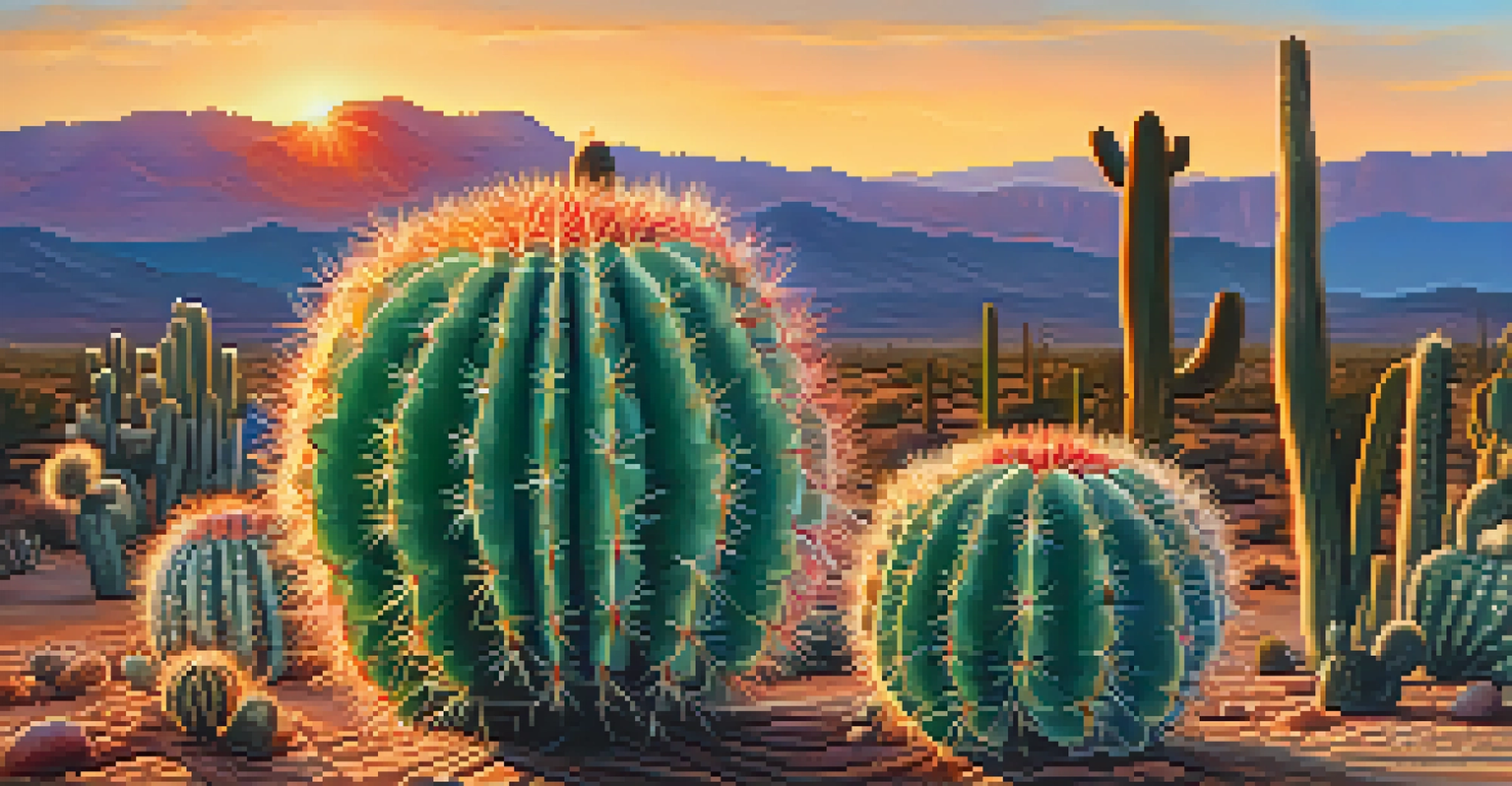Rituals of Connection: Peyote's Role in Spiritual Awakening

Understanding Peyote and Its Historical Significance
Peyote is a small cactus native to Mexico and the southwestern United States, known for its psychoactive properties. Traditionally used in Native American spiritual practices, this cactus has been a cornerstone of cultural rituals for centuries. Its significance goes beyond mere consumption; it's intertwined with identity, spirituality, and community.
The experience of peyote is not merely one of altered consciousness, but of a deep connection to nature and the universe.
The historical context of peyote reveals its role in ceremonial practices, where it is often used to facilitate deep introspection and a connection with the divine. Indigenous tribes regard peyote as a sacred tool, essential for healing and guidance during pivotal moments in their lives. This reverence for the cactus roots itself in a rich tapestry of traditions that emphasize harmony with nature and the universe.
In exploring peyote's historical significance, we can appreciate how it fosters a connection not only with oneself but also with the broader community and environment. Such rituals serve as a reminder of our shared humanity and the importance of understanding our place in the world.
The Science Behind Peyote and Spiritual Experiences
The active compound in peyote, mescaline, is responsible for the profound experiences reported by users. Research shows that mescaline interacts with serotonin receptors in the brain, which can lead to altered perceptions, enhanced emotional experiences, and a sense of interconnectedness with all living things. This scientific perspective offers a tangible explanation for the spiritual awakenings many report after peyote ceremonies.

Studies have indicated that individuals who partake in peyote ceremonies often experience feelings of unity and transcendence, sometimes described as a journey beyond the self. These experiences can foster personal growth, healing from trauma, and a deeper understanding of existence. It’s fascinating how a substance found in nature can provide such transformative insights.
Peyote's Cultural Importance
Peyote has been a sacred element in Native American spiritual practices, symbolizing identity, healing, and community connection.
By bridging traditional spiritual practices with scientific inquiry, we gain a comprehensive understanding of how peyote can catalyze spiritual awakenings. This synergy of ancient wisdom and modern science highlights the importance of respecting both perspectives in our exploration of consciousness.
Peyote in Modern Spiritual Practices
In recent years, a growing interest in peyote has emerged within various spiritual communities outside of its traditional users. Many individuals seek spiritual awakening and personal transformation, looking to peyote as a means to achieve these goals. This modern adaptation of ancient rituals showcases a desire to reconnect with deeper aspects of self and the universe.
In the silence of the ceremony, we discover the language of the soul.
While the resurgence of interest in peyote can be seen as a positive development for those seeking spiritual insight, it brings challenges regarding cultural appropriation. It's essential to approach these practices with respect and understanding, acknowledging the rich history and significance they hold for Indigenous peoples. Engaging with these traditions requires sensitivity and a genuine desire to honor their roots.
As we navigate this contemporary landscape of spirituality, it's vital to remember that the essence of peyote rituals lies in connection—both with oneself and with others. Embracing this connection can lead to a more profound appreciation of life, fostering unity and empathy in an increasingly fragmented world.
Preparing for a Peyote Ceremony: What to Expect
Approaching a peyote ceremony requires thoughtful preparation, both mentally and physically. Participants are often encouraged to set intentions for their journey, reflecting on what they hope to gain from the experience. This intention-setting helps create a focused mindset, allowing individuals to engage more deeply with the ceremony.
Physically, it's common to follow dietary guidelines leading up to the ceremony, which may include fasting or avoiding certain foods. These practices help cleanse the body and mind, promoting a more profound connection with the peyote. Understanding what to expect can alleviate anxiety and enhance the overall experience.
Scientific Insights on Peyote
The active compound mescaline in peyote interacts with brain receptors, leading to transformative spiritual experiences and personal growth.
In addition to physical and mental preparation, participants should embrace an open mindset. Being receptive to the experience, regardless of its challenges, allows for growth and transformation. As with any spiritual journey, the key lies in remaining present and engaged throughout the process.
Experiencing the Peyote Journey: Emotions and Insights
The peyote journey is often characterized by a range of emotional experiences, from joy and bliss to introspection and even discomfort. These emotions are integral to the process, serving as catalysts for self-discovery and healing. Participants may find themselves uncovering long-buried feelings, leading to profound insights about their lives and relationships.
As the journey unfolds, many report a heightened sense of awareness and connection to the world around them. Colors may appear more vibrant, sounds more profound, and interactions with nature more meaningful. This enhanced perception can lead to a deep sense of gratitude and appreciation for life’s simple pleasures.
Navigating the emotional landscape of a peyote experience can be challenging, yet it's crucial for personal growth. Embracing these feelings, whether positive or negative, allows for a more authentic connection with oneself and the universe. Ultimately, this journey can be a powerful tool for transformation and awakening.
Integration: Bringing Insights Back to Daily Life
After a peyote ceremony, the process of integration becomes vital for translating insights into everyday life. Participants often find themselves reflecting on their experiences, seeking to understand the lessons learned during their journey. This integration phase can take time and requires patience as individuals work to embody their newfound wisdom.
Many find it helpful to journal or engage in discussions with others who have shared similar experiences. Sharing insights can foster a sense of community and support, reinforcing the connections made during the ceremony. These conversations often lead to deeper understanding and personal growth, as participants explore how their experiences impact their lives.
Challenges in Modern Practices
As interest in peyote grows outside traditional contexts, it raises concerns about cultural appropriation and the need for respectful engagement.
Ultimately, the goal of integration is to weave the insights gained from the peyote journey into the fabric of daily life. By doing so, individuals can cultivate a more profound sense of purpose, connection, and authenticity, allowing their spiritual awakening to flourish long after the ceremony has ended.
The Future of Peyote Rituals in a Changing World
As interest in peyote rituals continues to grow, it's essential to consider the future of these practices in an increasingly interconnected world. Challenges such as environmental sustainability, cultural preservation, and ethical considerations are critical in ensuring that peyote remains a sacred tool for generations to come. Conversations around these issues are vital to fostering respect and understanding.
With the rise of digital platforms and global connectivity, more individuals are exposed to peyote's transformative potential. This accessibility can lead to both positive and negative outcomes, highlighting the need for responsible engagement with these rituals. Educating newcomers about the cultural significance of peyote is crucial to avoid appropriation and ensure respectful participation.

Embracing the future of peyote rituals means honoring the past while adapting to the present. By fostering a culture of respect, awareness, and connection, we can ensure that these sacred practices continue to inspire spiritual awakenings and foster a sense of unity in a diverse world.